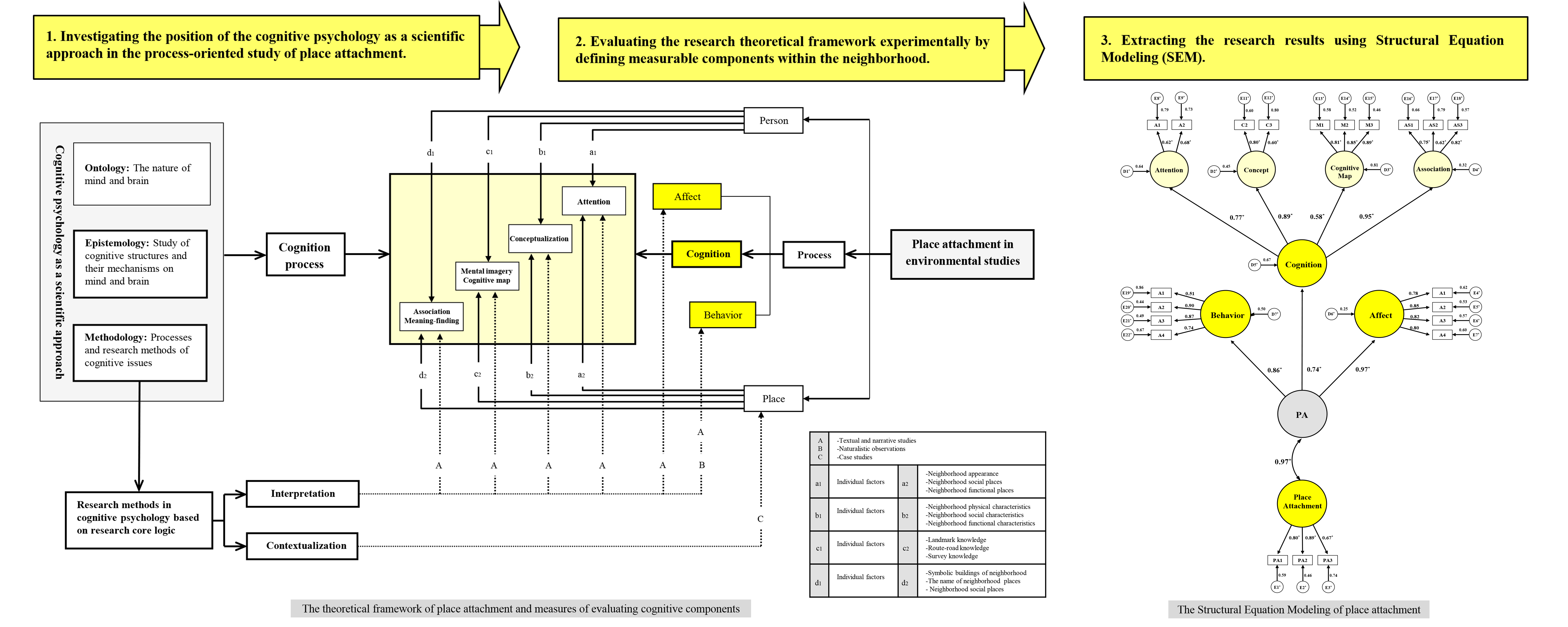BibTeX | RIS | EndNote | Medlars | ProCite | Reference Manager | RefWorks
Send citation to:
URL: http://ijaup.iust.ac.ir/article-1-298-en.html
2- Architecture & Urbanism Faculty, Tabriz Islamic Art University, Tabriz, Iran
The key issue in the design of today’s living spaces is the cognitive and socio psychological gap towards individual and social needs of today's human. Place attachment as a quality of urban space has a kind of product-oriented output and requires careful attention to the stages and process of attachment. In the analysis of this process, familiarity with cognitive structures and novel research methods in the field of cognitive psychology, provide designers with valuable information. The main aim of this study is to investigate the role of cognitive psychology approach in the process-oriented study of place attachment. The research tries to address the issue that "how does the process-oriented model is realized in place attachment with an approach of cognitive psychology?". Research is a combination of qualitative (interview) and quantitative (questionnaire) methods. In order to determine the appropriate number of participants, first a pretest was performed as a pilot study on 40 residents of the neighborhood and after the estimation of variance for the initial sample (S2 ) at the confidence level of 95%, the number of the sample was increased to 297. The findings of this study suggest that the most influential criterion on the attachment of residents, is the affect (0.97) dimension; Behavior (0.86) is the second and cognition (0.74) is the third one identified in terms of process dimensions. This research introduces influential criteria in the promotion of affective, cognitive, and behavioral dimensions of the place attachment process and also investigates the effectiveness degree of each dimension.

- The process-oriented model of place attachment is realized with an approach of cognitive psychology.
- A cognitive psychological approach makes it possible to study the place attachment process by defining the process of cognition.
- A cognitive psychological approach provides various scientific methods and instruments to study the cognition process of place attachment.
- The most influential criterion on the attachment of residents, is the affect dimension; Behavior is the second and cognition is the third one identified in terms of process dimensions.
| Rights and permissions | |
 | This work is licensed under a Creative Commons Attribution-NonCommercial 4.0 International License. |





